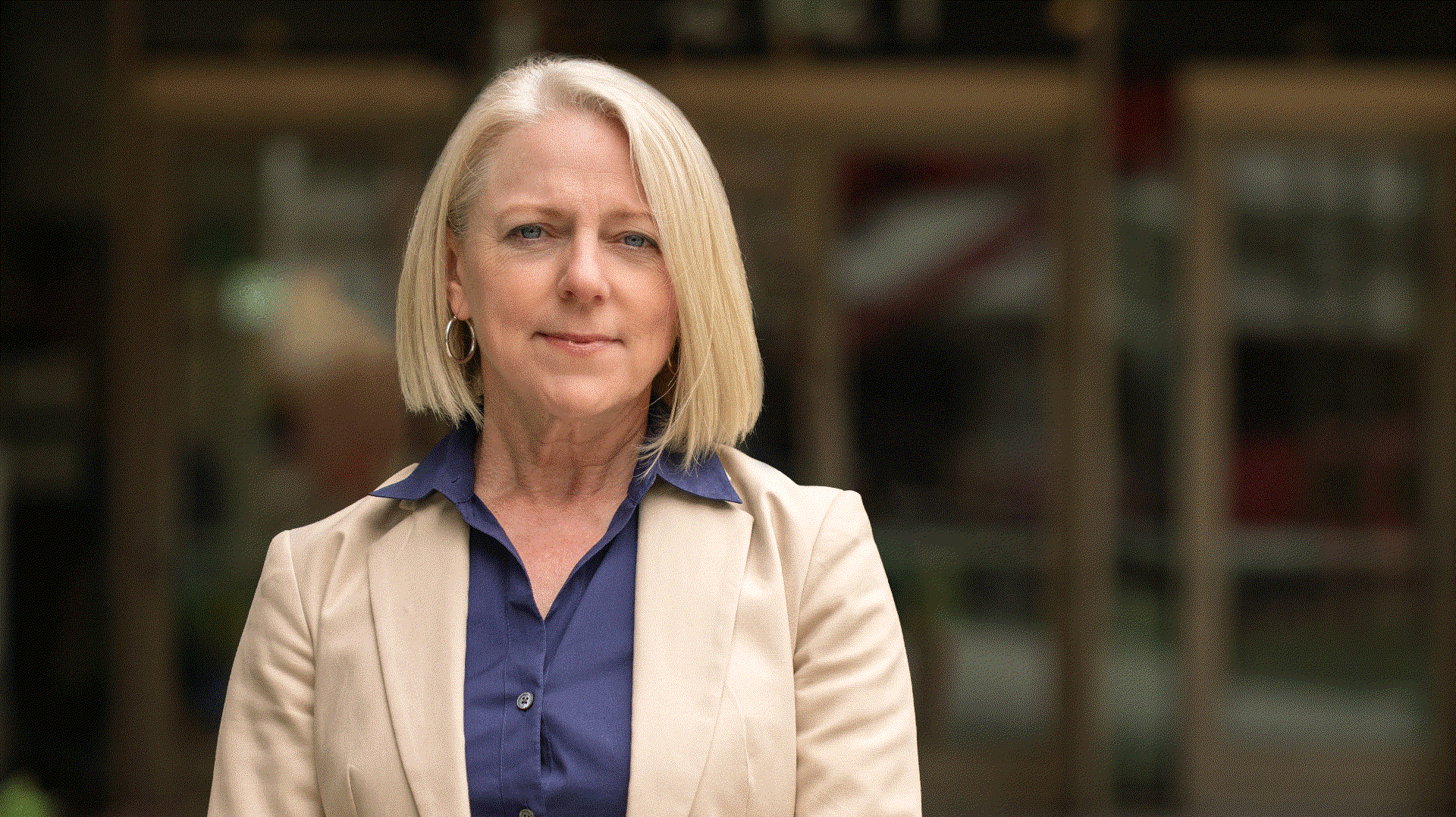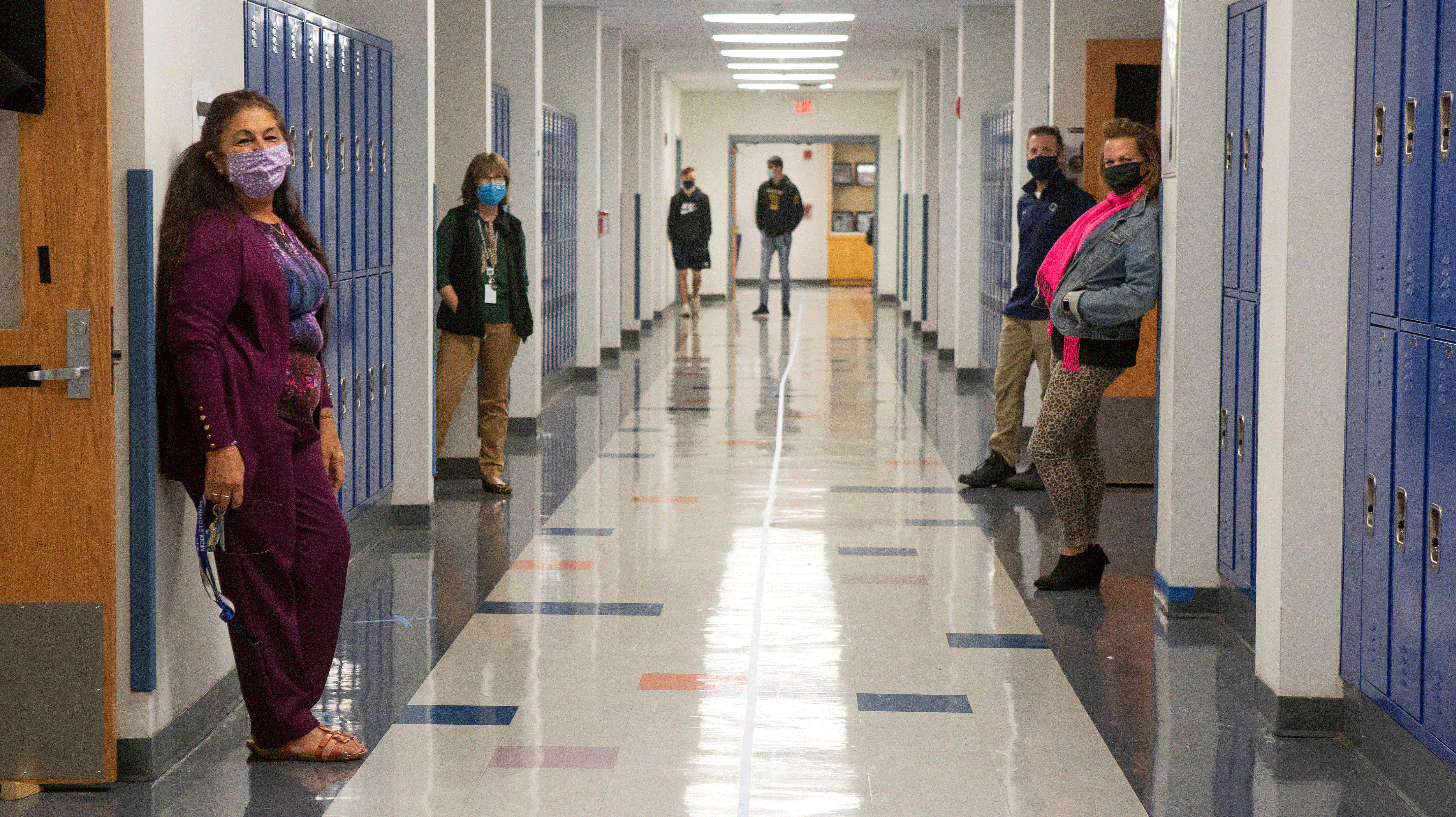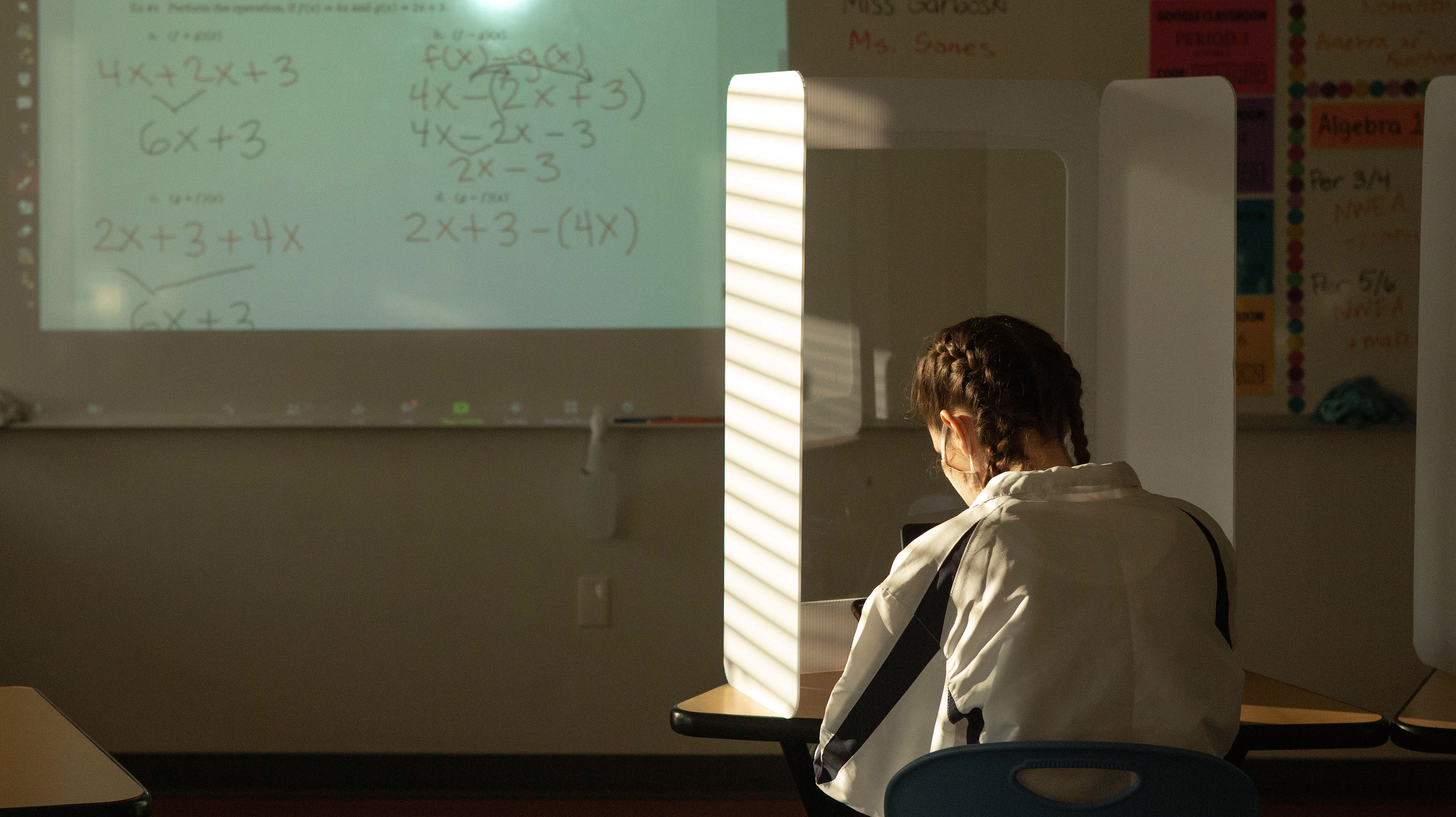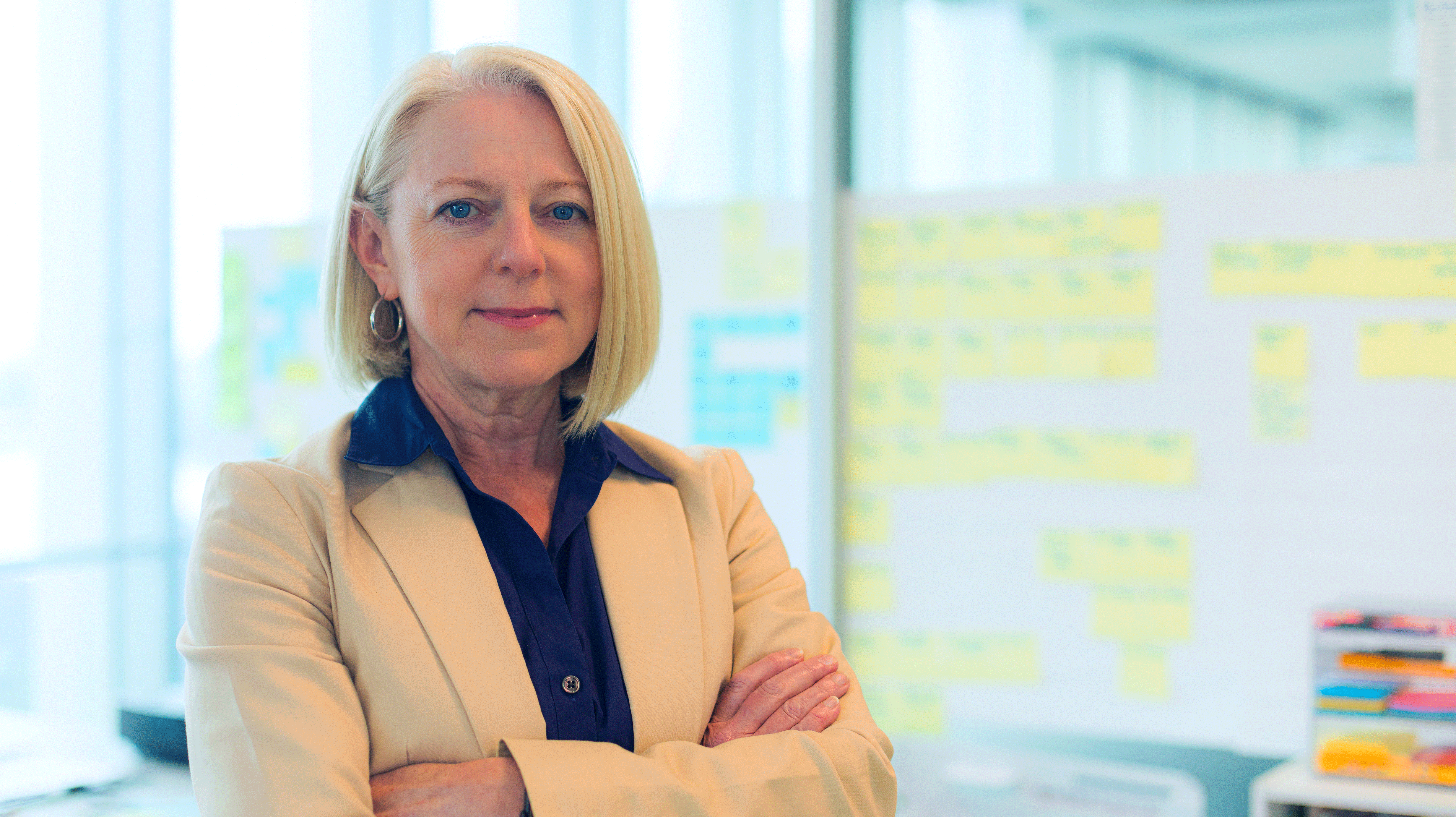Back to School: In a Time of Turmoil, U.S. Educators Seek a ‘New Normal’
With schools staggered by COVID, student struggles and teacher shortages, new UC Berkeley dean Michelle D. Young hopes innovation can bring better, more equitable education

Brandon Sanchez Mejia/UC Berkeley
Millions of U.S. elementary and high school students are returning to their classes, with the controversial masking and vaccination policies of the COVID pandemic largely fading into memory. School life, it would seem, has returned to normal.
But no — in fact, far from it, says Michelle D. Young, the new dean of the UC Berkeley School of Education. The culture wars followed COVID into the classroom, bringing book bans and controversies over teaching about racial and LGBTQIA+ issues. In the aftermath, legions of stressed-out, burned out teachers are leaving the profession. Untold numbers of K-12 students are AWOL.
At a time when many students need extra academic and emotional support, roughly four out of every five California school districts are experiencing shortages of teachers, administrators and counselors, Young warned in a recent interview. Schools across the nation, in cities and rural areas alike, are in a similar crisis.
“Even before COVID,” she said, “we knew that … we were not providing an equitable educational experience that serves everyone well, that lifts all boats. Now the fissures in our social fabric — and in our schools — really have been revealed.
“A lot of people in education would argue, ‘We don't want to get back to normal. We have to be thinking about what a new normal will need to be.’”
For a leader just starting in her new post, it’s difficult to imagine a goal that would be more ambitious. Her approach, spelled out during an hour-long interview, was striking: She didn’t panic over declining student test scores. She didn’t focus on the culture wars.
Rather, she seemed to be searching for ways to bring school communities together, to get beyond division and focus on core human issues. She emphasized the need to provide students with the academic and emotional support — perhaps even more time for recess and gym class — that advance learning and prepare them for 21st century working life and citizenship in a democracy.
Leadership: a commitment to diversity, equity and inclusion
Because teachers, counselors and principals will be central to those goals, Young wants to position Berkeley as a leader in innovation for building and sustaining a stronger national core of educators.

Allison Shelley/The Verbatim Agency for EDUimages via Flickr
Education leadership — and how to use leadership to advance diversity, equity and inclusion — has been a consistent focus in Young’s career. Before starting at Berkeley in June, she served three years as dean of education at Loyola Marymount University in Los Angeles. There, she led efforts to embed diversity, equity, inclusion, anti-racism and justice in the school’s strategic plan and created new positions to support the effort.
As executive director of the University Council for Educational Administration, a national consortium, she oversaw creation of a program to guide graduate students of color into higher education research and academic positions.
She has made the same commitment to students, faculty and staff at Berkeley.
The culture wars are a manufactured crisis
Even before COVID, Young said, educators had rising concerns about students’ emotional and psychological well-being. Research has found when the pandemic forced weeks or months of at-home video-based learning, student mental health suffered further.
Test scores in reading and math fell during the pandemic, with low-income students and students of color often the most severely affected. There’s a correlation, Young said: When children have more resources at home and outside of school — better technology, more human support — they score better.
We have an increasing gap between haves and have-nots as states have reduced funding for public education.
But recent news coverage of education has often focused more often on culture war issues in states such as Texas and Florida — campaigns to ban teaching of the nation’s racial history, to ban transgender athletes or to ban books.
Challenging those attacks is critically important, Young argued, because they distort racial history and stigmatize LGBTQIA+ students and their families.
But they pose another threat, too, she said. The culture war battles reflect orchestrated “astroturf” campaigns in which outside groups funded by dark money whip up a political frenzy in local districts. Not only do they damage learning, but they distract communities from genuinely urgent issues.
“It’s related to a lot of the divisiveness that you see within our country right now,” Young said. “Just looking at the presidential elections — you can pretty much identify who is angry at schools along these same lines.
“They're raising issues and questions that are not necessarily the issues that families are talking about around their kitchen table.
“So they really pull people's attention away from things that we should be talking about: How do we ensure that our state curriculum is actually preparing kids for college and careers that are going to be meaningful and allow them to participate in our country as informed citizens?”
Schools were already struggling. COVID made things worse
In all of this turmoil and conflict, the new Berkeley dean sees deeper historical forces at work.

Allison Shelley for EDUimages via Flickr
Historically, or at least since the desegregation of U.S. schools starting in the mid-20th century, a core mission of public schools has been to give all students — girls and boys, rural kids and urban kids, students of every race and ethnicity — opportunities for further learning, for work, for life. The schools were supposed to be the “great equalizer,” Young said, but under sustained attack, that goal has faded in importance.
Starting in the 1970s, conservatives began to build coalitions based on distrust of government and, often, distrust of any public venture. Schools became a target. Teachers became targets.
Over time, Young explained, many states and communities limited or reduced their investments in public schools. Diminished social status and chronically low pay discouraged many young people from seeking education careers. National movements for charter schools and religious schools further stressed the public system.
When COVID arrived in 2019, the virus found an educational system that was already weakened — and as students and their teachers and counselors return to school this fall, the system is still struggling to cope.
The broad divestment in public schools “means that there are fewer individuals who are teaching in classrooms,” Young said. “So you got larger class sizes, you've got fewer folks working at schools, you've got fewer resources to work with, particularly in those areas that don't have other alternatives for bringing in resources.”
“So we have an increasing gap between haves and have-nots as states have reduced funding for public education.”
All of those factors are driving an exodus — of faculty and staff, and of students, too.
One recent report found that 30% public school students in California were chronically absent in the 2021–22 school year— nearly triple the rate just before the pandemic.
How do we teach, and what do we teach, to ensure powerful learning experiences so that our students can contribute to a strong economy and a strong democracy?
Even before the pandemic, the shortage of young teachers and resignations among veteran teachers has left some 80% of California districts struggling to properly staff their classes and run their schools. While those numbers improved for a few years, numbers plunged again last year. Nationally, a study last year found that teacher shortages forced 90% of U.S. school districts to restrict operations in one or more their schools.
As the new school year begins, Young said, “a lot of places are feeling pretty desperate about having talented and committed people that they can put in front of children in the classroom.”
Progress might require breaking old rules
In her new campus office at the sleek Berkeley Way West building, Young has post-its arrayed across much of one wall: departments, programs, specialties, faculty members.
As she weighs the resources at hand, she’s focused on core strategic questions: “How do we teach, and what do we teach, to ensure powerful learning experiences so that our students can contribute to a strong economy and a strong democracy?”
In her view, Berkeley is already endowed with creative faculty and staff pursuing innovation for the post-pandemic world. Scholars are studying how to increase the number of Black men in the state teaching corps. They’re testing how artificial intelligence can be used to provide personal tutoring to students who need to make up for lost time, and this fall they’ll open an experimental classroom for online education.

Brandon Sanchez Mejia/UC Berkeley
As much as the pandemic devastated learning, it provided some important lessons on how students learn. For example, the pandemic showed us that some children had the technology at home to support their education, while others did not. Some had emotional support at home to get through the crisis, but again, some did not.
Such insights are guiding the exploration of new strategies.
Portrait of a leader: innovation, optimism — and impatience
For example, Young asks, how can schools identify people who are inspired and energized by teaching, and who are likely to make a sustained commitment to teaching?
Another idea: Traditionally, students are grouped and taught by age, but what if there were mixed-age classrooms? That way students who were advanced in math could learn with older students. Those who needed help in reading could shore up their basic skills with younger students.
Instead of having age-based levels, “we could be thinking about each child as an individual learner with different strengths and challenges,” she explained. “We could be thinking about an individualized education plan for each child. And that’s interesting, because it’s the approach we take for children with special needs and for others with exceptional skill sets.”
And another idea: If exercise helps students to learn, shouldn’t there be more time for recess and P.E.?
“We have faculty who are building new instructional strategies or researching existing instructional strategies, and that can cut through some of the politics around the reading wars or the math wars,” she said. “They’re asking: What does really high-quality teaching look like? And how does that shift what we do in our schools?”
That’s the power of Berkeley, Young said. It has the research skill to develop new ideas and the reputation to share new insights with educators at every level, in California and beyond.
It’s a tense moment in U.S. education, and the stakes are measured in human lives. In the volatility and threat of a once-in-a-century crisis, Michelle Young seems to see opportunity.
“I’m an optimist,” she said. But then she corrected herself: “I’m an optimist, but an impatient optimist.”